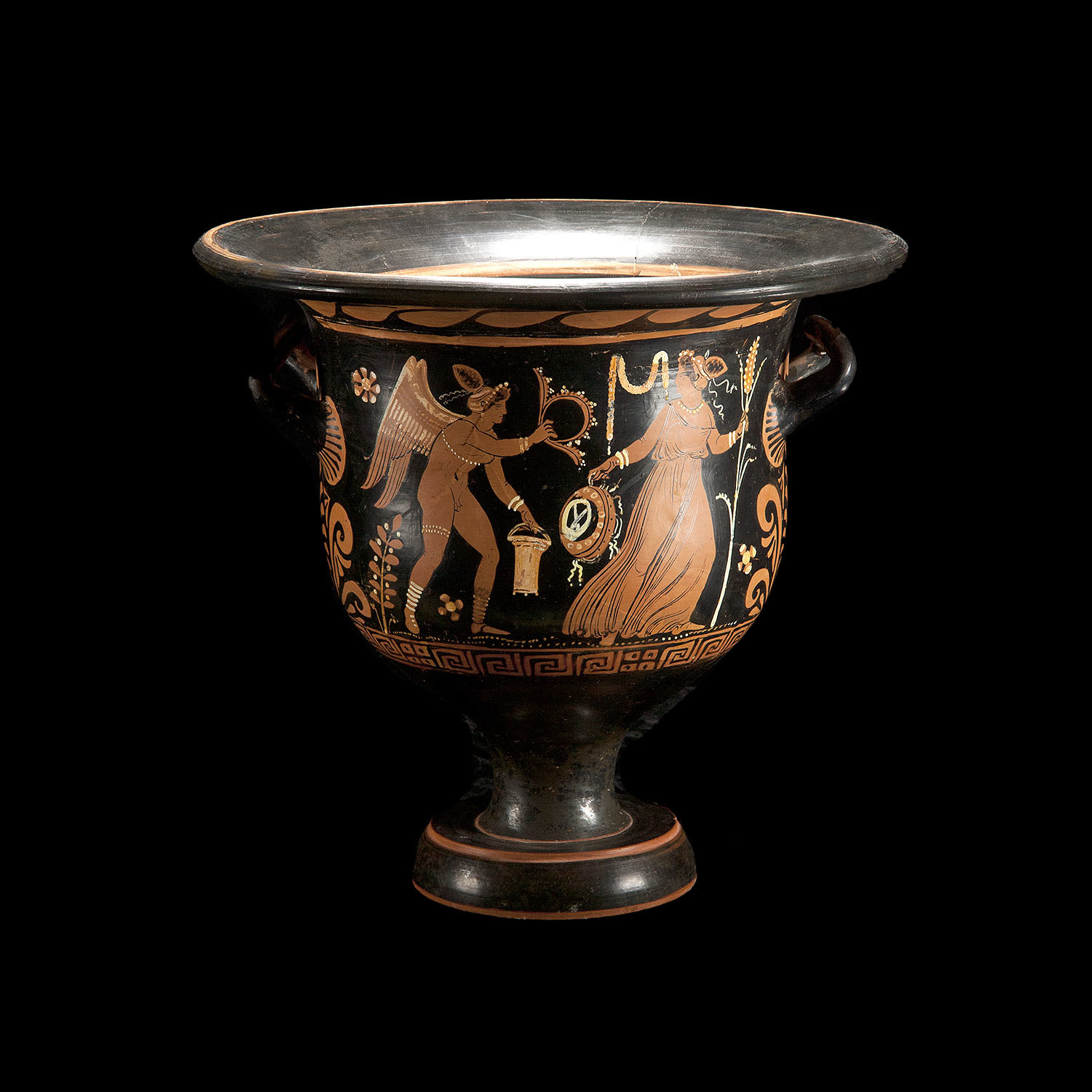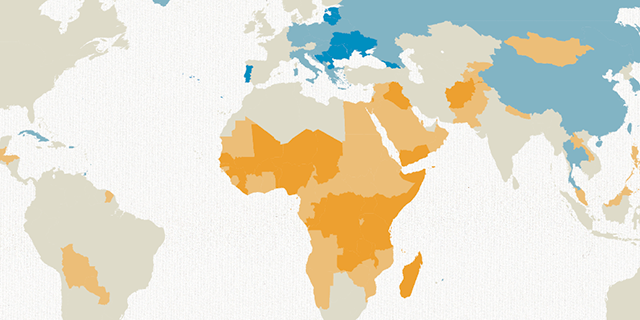That happened after the 69th week.
So did the destruction of the temple and city of Jerusalem.
“And after the sixty-two weeks
Messiah shall be cut off, but not for Himself;
And the people of the prince who is to come
Shall destroy the city and the sanctuary.
The end of it shall be with a flood,
And till the end of the war desolations are determined.
The 70th week begins some time after the city and sanctuary are destroyed in 70AD.
Don’t you agree?
Then he shall confirm a covenant with many for one week;
But in the middle of the week
He shall bring an end to sacrifice and offering.
And on the wing of abominations shall be one who makes desolate,
Even until the consummation, which is determined,
Is poured out on the desolate.”
No, I don't agree, although you can certainly read it that way. It really depends on how you read it.
Passages like this are difficult because it isn't always easy to know whether the discussion is linear or recapitulating. Some of the most difficult passages are, I think, ones that recapitulate, leading many to make the mistake of reading things in a linear way.
But it is easily apparent to me that a good many Scripture passages not only recapitulate, but also read as "dualisms." That is, the passage intentionally writes twice the same thing, put in two different ways.
This avoids misunderstanding, but strangely sometimes creates more confusion than understanding. There just isn't a better way to try to make a point than to repeat it in two different ways.
The book of Revelation is, I believe, this way. There are, I believe, many smaller visions inside of several big visions, so that despite the Vision being a single narrative within John's time frame, the visions actually represent a number of different time frames associated with each vision. Otherwise, to read it in linear fashion we would see Christ coming several times when in reality the one Coming is indicated in several different descriptions, covering the same event from different angles.
The Proverbs are a clear example of the use of "dualisms," a statement written twice in two different ways. And yet I've heard a number of teachers indicate their opinion that each statement is saying something completely different simply because different words are being used.
Saying "God is a light," together with "He is a beacon" would be saying the same thing. And yet some woujld persist and saying that each line, being distinct, is saying something significantly different.
This being said let me show you how I read Dan 9.26-27 as a recapitulation. 1st, the seminal thought is laid down in a single time frame in verse 24, where the Messianic event that is coming is depicted as accomplishing 6 major things. I'm not sure precisely what these things are, but for the sake of argument let me just say they are as follows...
Dan 9.24 24 “Seventy ‘sevens’ are decreed for your people and your holy city to finish transgression (fully manifest Israel's sin in rejecting Messiah in order to prepare Israel for judgment)
, to put an end to sin (destroy Israel's idolatry)
, to atone for wickedness ( the Messianic sacrifice to provide a way past Israel's failures)
, to bring in everlasting righteousness (set the Messianic standard for righteousness that leads to Eternal Life)
, to seal up vision and prophecy (fulfill the Messianic prophecy fulfilling the means of final deliverance for Israel)
and to anoint the Most Holy Place (grace the Old Covenant with Messianic fulfillment).
So the time frame established is the time when Christ's earthly ministry was accomplished. Then we see how the sin exposed Israel in this will result in Israel's judgment in the form of yet another judgment against Israel and the Temple.
Dan 9.25 “Know and understand this: From the time the word goes out to restore and rebuild Jerusalem until the Anointed One, the ruler, comes, there will be seven ‘sevens,’ and sixty-two ‘sevens.’ It will be rebuilt with streets and a trench, but in times of trouble. 26 After the sixty-two ‘sevens,’ the Anointed One will be put to death and will have nothing. The people of the ruler who will come will destroy the city and the sanctuary. The end will come like a flood: War will continue until the end, and desolations have been decreed.
That is, from the time Artaxerxes gave a decree, confirming Cyrus' earlier decrees, which took place in 457 BC, until Messiah there would be 7 "Weeks" and 62 "Weeks." I believe the 7 Weeks designated the time of Jerusalem's complete restoration, along with a completion of the Temple Worship.
From Cyrus to the time of Nehemiah this restoration was progressive but limited in each stage. Nehemiah represented the ending stages, which became the beginning of the 70 Weeks time frame. This was the period of Jerusalem and the Temple associated with the Persian Restoration, or the 2nd Temple.
So, from 457 BC to 26 BC is 483 years, or 69 "Weeks." This takes us to the time when Israel's sin is fully manifested in their rejection of Messiah. So this putting to death of Messiah is the 1st statement in the recapitulation series that we are, I believe, dealing with. It states the death of Messiah and its consequence, the next and final destruction of the Temple, along with the destruction and age-long exile of Jerusalem.
Then we have the recapitulation....
Dan 9.27 He will confirm a covenant with many for one ‘seven.’ In the middle of the ‘seven’ he will put an end to sacrifice and offering. And at the temple he will set up an abomination that causes desolation, until the end that is decreed is poured out on him.
The pronoun "he" has to be, I think, consistent throughout the passage. The Messiah is mentioned, but also the "ruler" is mentioned who destroys Jerusalem and the Temple. It is not said that this desolation of Jerusalem and the Temple would be in the 70th Week--only that this is the consequence of the death of Messiah, which does take place in the 70th Week.
The "ruler" is, I believe, a Roman Ruler--he is the one who accomplishes two things here as a consequence to putting Messiah to death. He puts an end to sacrifice and offering, which I think is the direct affect of putting Jesus to death. Putting Jesus to death confirmed his covenant of atonement, presaged under the Law. It ended all need for sacrifices of atonement in one final Messianic atonement.
And he sets up the Abomination of Desolation, which I believe was setting up the Roman seige against Jerusalem *after* putting Jesus to death in the 70th "Week."
The AoD is thus the "people of the Ruler to come," ie the Army of the Roman Ruler which will destroy Jerusalem and the Temple. They will "desolate," or destroy them. They are an "Abomination" because they are pagan violators of the Lord's holy Worship. This took place *after* the 70th Week in 70 AD, within the generation of Jesus' earthly ministry as he had predicted.
Thus, the event leading to this main theme of judging Israel and destroying the Temple is mentioned, directly or indirectly, twice. It is 1st mentioned when the Messiah is put to death in the 70th Week by the Roman Ruler in vs. 26 leading to the desolation of Jerusalem and the Temple afterwards.
And it is mentioned again in vs. 27 by speaking of the consequence that *follows* the death of Messiah when the Roman Army, the Abomination of Desolation, desolates Jerusalem and the Temple. This is a repeat of the consequence of putting Messiah to death, leading to the desolation of Jerusalem and the Temple.
Thus vs 26 and vs 27 complement each other and repeat the same reality, that in the 70th Week the Messiah is put to death, leading to the confirmation of God's eternal covenant, with the consequence being the desolation of the city and the sanctuary by the Abomination of Desolation.
I know it may be difficult to read it this way when you have read it differently. But it's an option I came up with by reading many commentaries on it and listening to advice.







